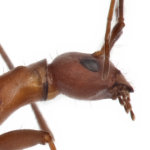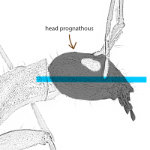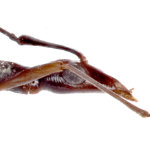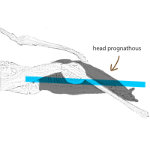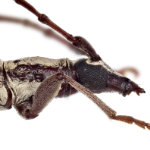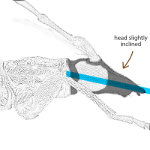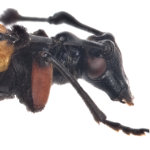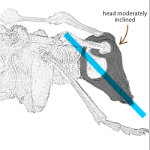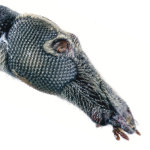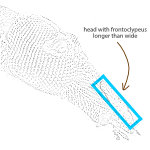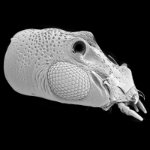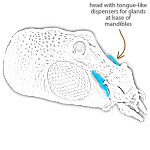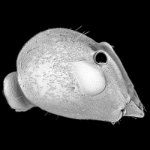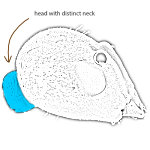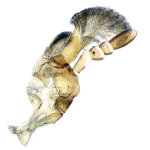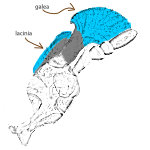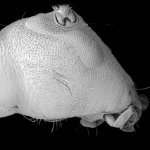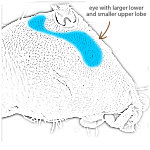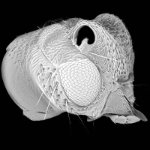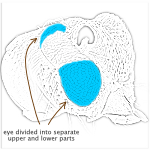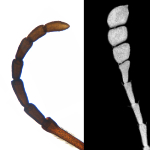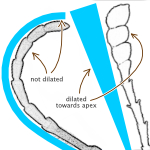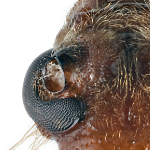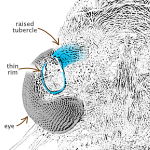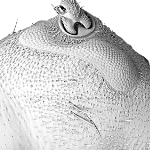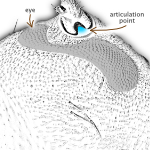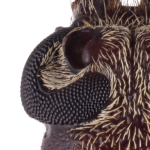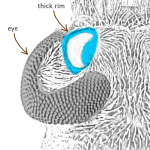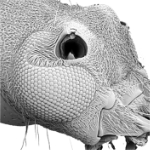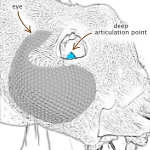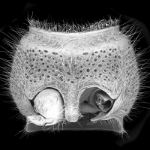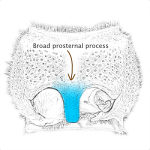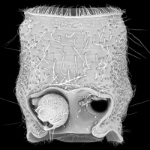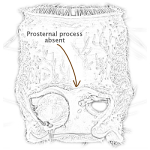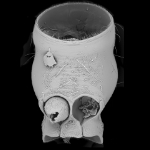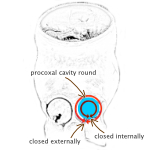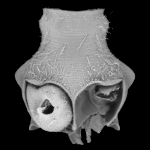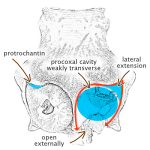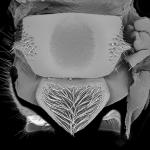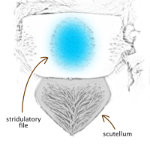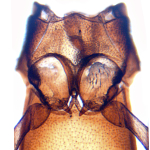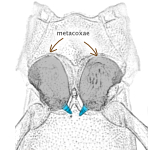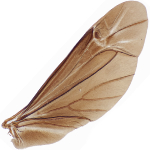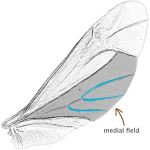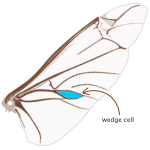Cerambycinae
Australia has been often cited as the only continent where the species of Cerambycinae outnumber the species of Lamiinae. Australian Cerambycinae include quite a variety of diurnal (day active) and often brightly coloured species with contrasting hues or brilliantly iridescent elytra.
Head
1. prognathous to moderately inclined head with frontal region rarely deflexed from behind eyes.
2. Frontoclypeus usually subquadrate, occasionally distinctly longer than wide, forming rostrum
3. median longitudinal groove and associated internal endocarina usually present but incomplete posteriorly. Glandular opening near mandibular bases and tongue-like dispenser present in few genera only
4. Postocular constriction absent or weak, forming distinct neck in a few ant-like genera.
5. Frontoclypeal suture impressed or not, straight, arcuate or angulate.
6. Labrum visible externally, usually transverse.
7. Maxilla with distinct, setose galea and lacinia; apical labial and maxillary palpomeres fusiform to strongly triangular; ligula almost always membranous and expanded laterally.
8. Eyes variable in size, mostly emarginate, forming larger lower and smaller upper lobes, rarely oval or divided into separate upper and lower parts; finely to very coarsely facetted.
9. Antenna usually 11-segmented, rarely 12-segmented, filiform or serrate, sometimes dilated toward apex, modified flabellate, biflabellate or clavate. Scape always distinctly longer than pedicel; pedicel short, usually transverse, shorter than antennomere 3.
10. Antennal insertions have two major types of articulation: (a) insertion prominent supported by raised tubercle, the rim is thin, usually directed laterally with scape shallowly received so that the articulation point is on the rim; (b) insertion depressed, usually flat, often located in a shallow depression, the rim is thicker, reflexed with base of scape deeply received so that the point of articulation is located deep inside the insertion.
Thorax
1. Prosternal process variable, ranging from broad to absent
2. Procoxal cavities round or weakly transverse often with lateral extensions and exposed protrochantin, closed internally, closed or open externally.
3. Scutellum always visible; mesoscutum rarely with median endocarina, usually with undivided stridulatory file.
4. Mesocoxal cavities open or closed laterally to mesepimeron; mesotrochantin visible or not. Mesocoxae flat or rarely projecting; in males of Syllitosimilis with inner spinose projections.
5. Elytra usually completely covering abdomen but sometimes shortened or narrowing apically and dehiscent.
6. Wings always present, always without wedge cell and with 3 or 4 free veins in median field.
